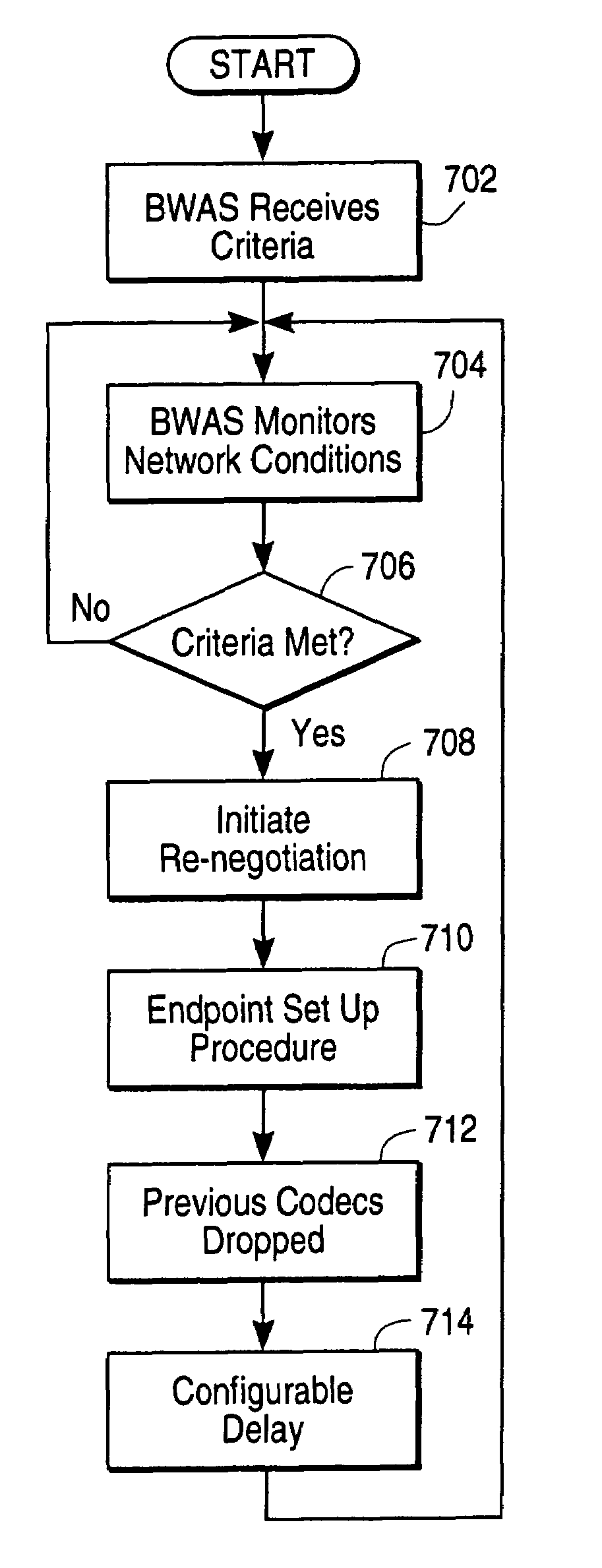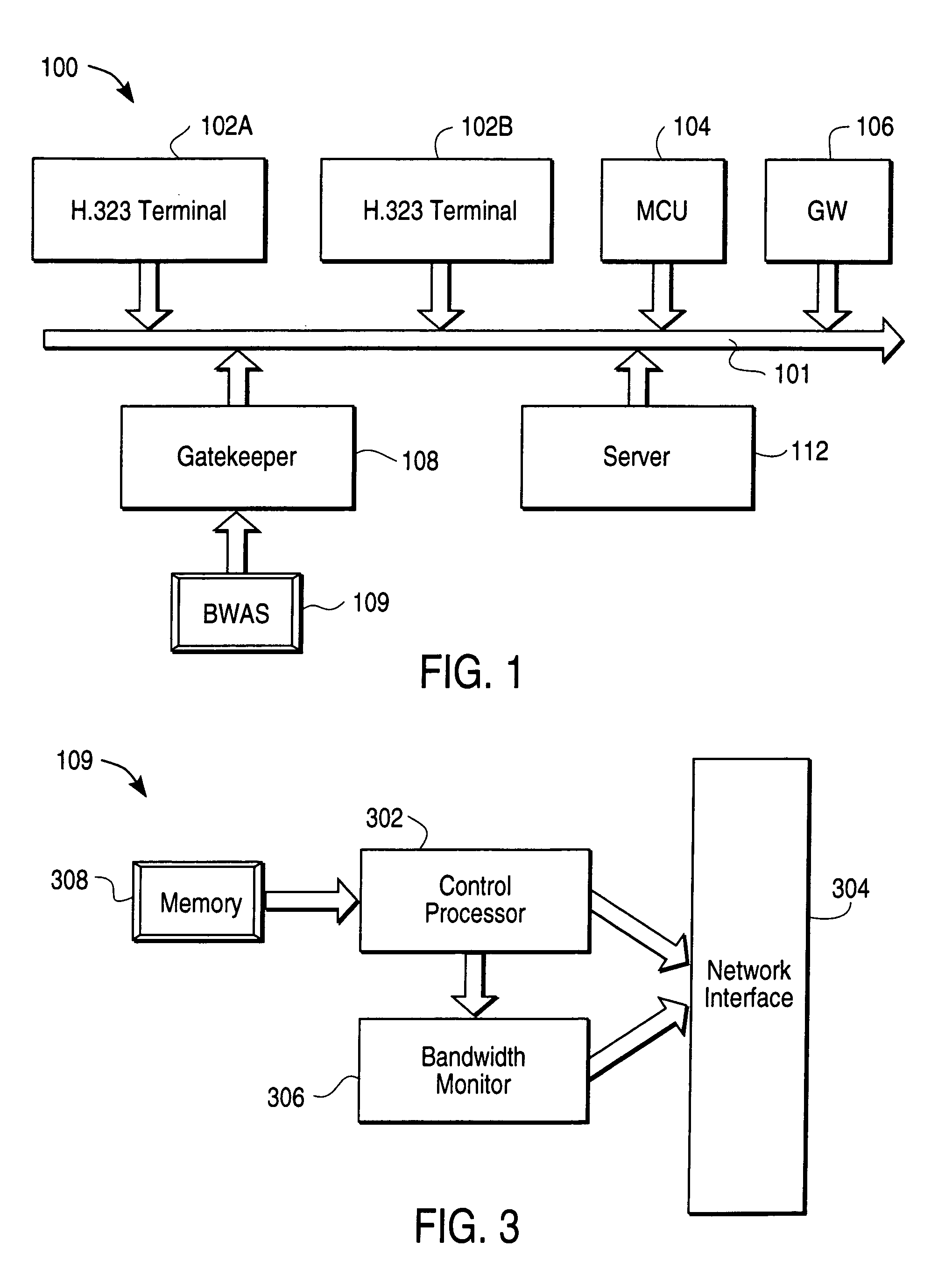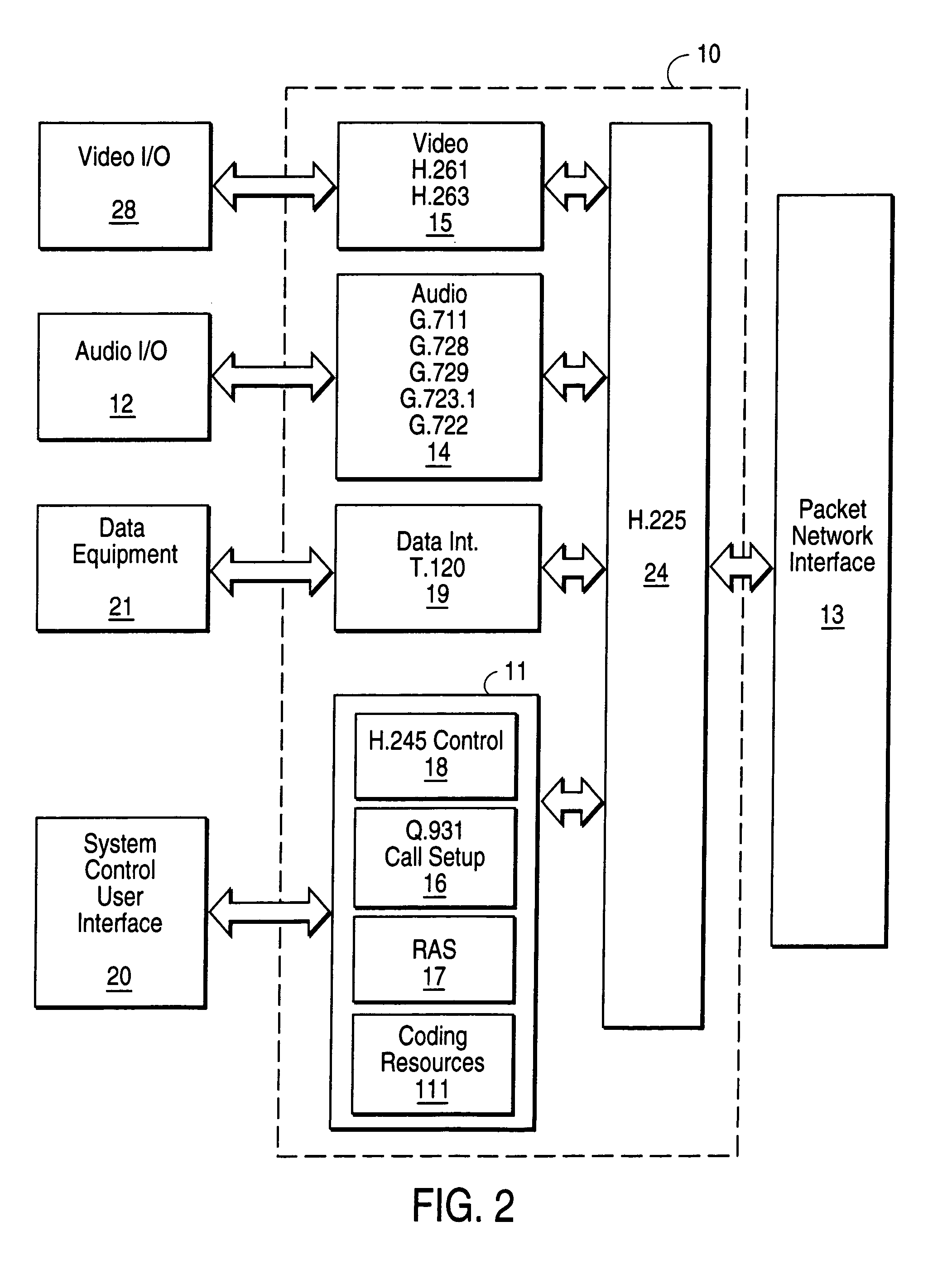System and method for dynamic codec alteration
a dynamic codec and codec technology, applied in the field of telecommunications systems, can solve the problems of inefficient utilization of system bandwidth, high bandwidth consumption, and other problems, and achieve the effects of less bandwidth-intense, high bandwidth-use coding algorithms, and high system bandwidth usag
- Summary
- Abstract
- Description
- Claims
- Application Information
AI Technical Summary
Benefits of technology
Problems solved by technology
Method used
Image
Examples
Embodiment Construction
[0020]FIG. 1 is a diagram illustrating a telecommunications system 100 according to an embodiment of the present invention. In particular, the telecommunications system 100 includes a local area network (LAN) or packet network 101. Coupled to the LAN 101 may be a variety of H.323 terminals 102A, 102B, a multi-point control unit (MCU) 104, an H.323 gateway 106, an H.323 gatekeeper 108, a LAN server 112 and a plurality of other devices such as personal computers (not shown). The H.323 terminals 102A, 102B are in compliance with the H.323 standard. Thus, the H.323 terminals 102A, 102B support H.245 for negotiation of channel usage, Q.931 for call signaling and call setup, registration admission status (RAS), and RTP / RTCP for sequencing audio and video packets. The H.323 terminals 102A, 102B may further implement audio and video codecs, T.120 data conferencing protocols and MCU capabilities. Further details concerning the Recommendation H.323 may be obtained from the International Telec...
PUM
 Login to View More
Login to View More Abstract
Description
Claims
Application Information
 Login to View More
Login to View More - R&D
- Intellectual Property
- Life Sciences
- Materials
- Tech Scout
- Unparalleled Data Quality
- Higher Quality Content
- 60% Fewer Hallucinations
Browse by: Latest US Patents, China's latest patents, Technical Efficacy Thesaurus, Application Domain, Technology Topic, Popular Technical Reports.
© 2025 PatSnap. All rights reserved.Legal|Privacy policy|Modern Slavery Act Transparency Statement|Sitemap|About US| Contact US: help@patsnap.com



